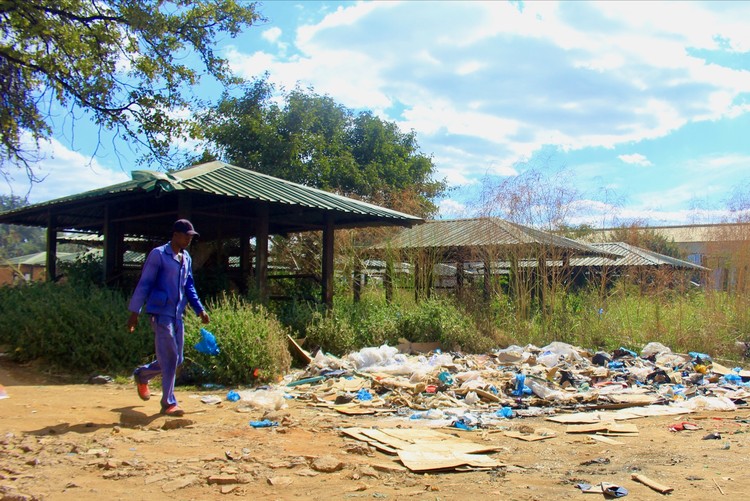Giyani’s rotting market stalls still empty after 14 years
More than 800 hawkers continue trading without toilets or water
In 2011, the Limpopo Department of Economic Development, Environment and Tourism funded the construction of permanent market stalls behind Giyani’s Shoprite, but 14 years later, they remain unused. Photo: Thembi Siaga
In 2021, we reported that market stalls in central Giyani in Mopani District, Limpopo, had been left to rot for over a decade. At the time, municipal spokesperson Steven Mavunda said the mayor (then Shibambu Basani) had rolled out a programme to identify and register all hawkers in the city centre to allocate stalls. He said the process had been “underway”.
Four years later, despite promises by the Greater Giyani Municipality and the Limpopo Department of Economic Development, Environment and Tourism (LEDET) - which built the stalls – there appears to be no change.
More than 800 hawkers at the central taxi rank continue to eke out a living in all weather, without electricity, access to toilets, running water or proper shelter. Meanwhile the stalls built for them were never allocated and have fallen into ruin. They are overgrown with plants and have been vandalised.
The hawkers mostly sell fresh produce, such as tomatoes, bananas and onions. Informal traders contribute more than 20% to the local economy according to the municipality.
“We don’t have toilets or water here. Sometimes we go to the mall and pay R3 just to use the toilet. We have no water, so we buy it,” a 54-year-old hawker told us. She is the sole breadwinner in her household. She asked not to be named.
Some registered traders said they have stopped paying their annual trading fees because they are fed up with the situation.
LEDET spokesperson Zaid Kalla would not tell us how much was spent on the stalls, saying the figures must be accessed through legal channels.
GroundUp has been unable to establish the cost because links to the tender document online are dead.
The Greater Giyani Municipality 2025/26 draft budget, however, reflects an allocation of R4.4-million to build ten new stalls.
Mavunda said they are consulting the hawkers to find out who may want to use the stalls. “There are about 900 registered hawkers, but the stalls can’t accommodate even 800.”
He said the municipality only has funding to build five stalls near Nkhensani Hospital and five at the TVET college.
When asked about plans to address the lack of water and sanitation at the taxi rank, Mavunda said fixing the water and toilet facilities would require rebuilding the stalls. He said the stalls were originally equipped with these facilities but they were later disconnected the due to misuse.
Support independent journalism
Donate using Payfast

Don't miss out on the latest news
We respect your privacy, and promise we won't spam you.
Next: Court rejects appointment of advocate to investigate special needs school
Previous: In photos: The fossil hunters of the Sterkfontein Caves
© 2025 GroundUp. This article is licensed under a Creative Commons Attribution-NoDerivatives 4.0 International License.
You may republish this article, so long as you credit the authors and GroundUp, and do not change the text. Please include a link back to the original article.
We put an invisible pixel in the article so that we can count traffic to republishers. All analytics tools are solely on our servers. We do not give our logs to any third party. Logs are deleted after two weeks. We do not use any IP address identifying information except to count regional traffic. We are solely interested in counting hits, not tracking users. If you republish, please do not delete the invisible pixel.

